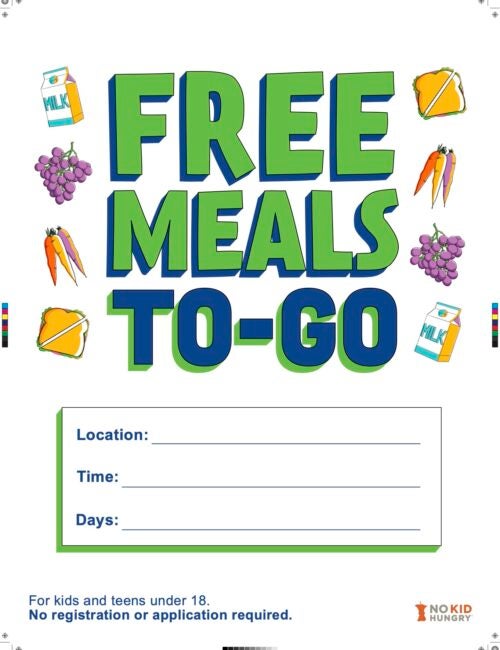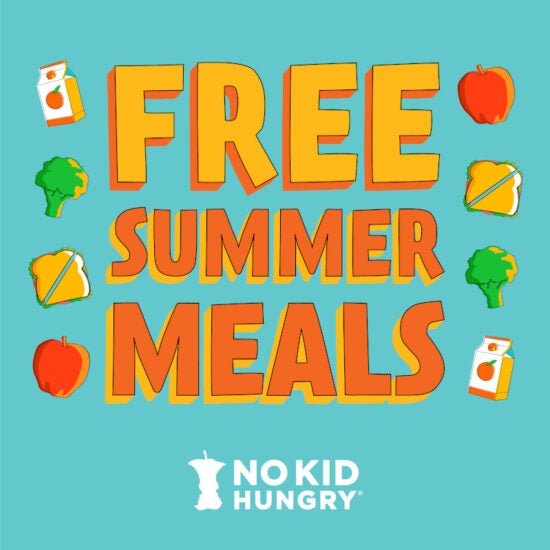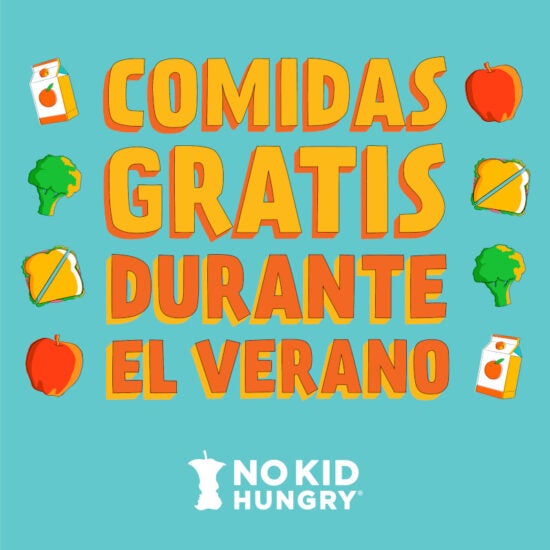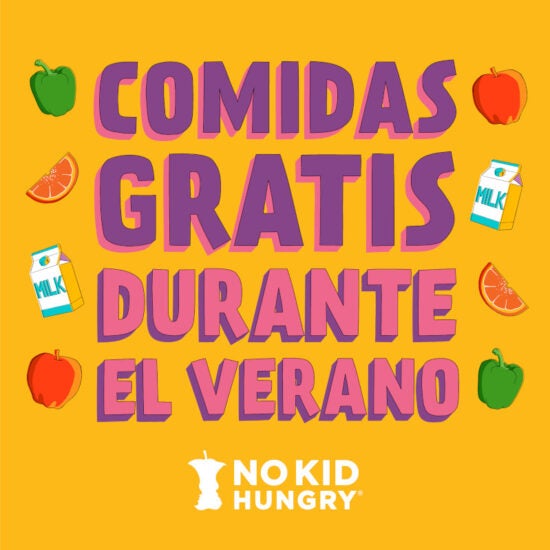Overview
Libraries serve as trusted community hubs, welcoming children and families while providing enriching summer programming. By participating in summer meal programs, libraries can help combat hunger, nourish young minds and bodies, and strengthen their role as essential community resources. This toolkit provides libraries with the guidance, resources, and marketing materials needed to operate a summer meal site successfully.
About No Kid Hungry Texas & Our Support
No Kid Hungry Texas is committed to ensuring every child has access to healthy meals, especially during the summer when many lose access to school meals. We work with community organizations, school districts, and libraries to address summer hunger by providing technical assistance, grants, and resources to help launch and expand meal programs. Through funding, best practices, and strategic support, we provide the tools and support needed to successfully run summer meal programs, ensuring kids receive the nutrition they need to thrive at all times.
To support your dedication to ensuring there is No Kid Hungry this summer, we’ve created this toolkit, filled with resources, templates, and images that can be used to promote and celebrate your non-congregate summer meal program. Please use these marketing materials to share the benefits of your program, including supporting the well-being of our children and saving families time and money. Together, we can make a lasting impact!
Why Libraries Should Get Involved
Participating in a summer meal program offers numerous benefits, including:
- Feeding hungry kids and teens who might otherwise go without meals.
- Attracting new, consistent patrons—children, teens, and families—to library programs.
- Enhancing the library’s visibility as a year-round community asset.
- Developing new partnerships with food providers, schools, and childcare programs.
- Saving money if the library already provides snacks or meals through its budget.
Reducing behavioral issues by ensuring kids have access to nutritious food.
How to Become a Summer Meal Site
1. Determine Eligibility
Libraries must be located in an “area-eligible” location, meaning at least 50% of students in the school attendance zone qualify for free or reduced-price meals. To check eligibility:
- Use TDA’s Eligibility Map.
- Use USDA’s Area Eligibility Map
- If ineligible, contact the state SFSP administering agency for possible exceptions: www.fns.usda.gov/contacts (Select SFSP from the “By Program” menu).
2. Find a Sponsor
Sponsors handle all administrative, financial, and food service responsibilities. Libraries only need to serve the meals and provide a welcoming environment. To find a sponsor:
- Check the USDA’s Capacity Builder Map: www.fns.usda.gov/capacitybuilder
- Contact local school districts or food banks to ask if they would sponsor the site.
3. Plan for Meal Service
What libraries need to operate a meal site:
- Staff and/or volunteers to serve meals and supervise. In some cases, sponsors will also provide staff to run the program.
- A designated space (indoors or outdoors) for kids to eat.
- Trash cans and cleaning supplies to manage waste.
- An enrichment activity such as storytime, crafts, or games (required for afterschool meals, encouraged for summer meals). However, for rural non-congregate meal sites, enrichment activities are not required. These sites operate under different guidelines, allowing families to pick up meals to take home.
Form Email: Inquiry About Becoming a Meal Site
If your library is interested in becoming a summer meal site, reaching out to a sponsor is the first step. Sponsors handle the administrative and food service responsibilities, while your library provides a welcoming space for meal distribution. Below is a sample email template you can use to connect with potential sponsors and explore how your library can get involved.
Subject: Inquiry About Becoming a Summer Meal Site
Dear [Sponsor’s Name],
I hope you’re doing well. My name is [Your Name], and I am reaching out on behalf of [Library Name]. We are excited about the opportunity to serve as a summer meal site and help provide nutritious meals to kids and teens in our community.
We understand that sponsors play a key role in handling the administrative, financial, and food service responsibilities, and we’d love to explore how we can collaborate. Specifically, we’d like to learn about:
- Your requirements for new meal sites
- The types of meals provided and delivery logistics
- Any staffing or training expectations
- The next steps in the application process
We are committed to making this program a success and would love to discuss how we can work together to ensure kids receive the meals they need this summer. Please let us know a convenient time to connect.
Looking forward to your response. Thank you for your time and for all you do to support kids and families!
Best,
[Your Name]
[Your Contact Information]
Promoting Your Summer Meal Site
Libraries can help spread the word about their meal sites by:
- Posting flyers and posters (digital materials available from the Texas Department of Agriculture).
- Sharing information through social media, newsletters, and websites.
- Partnering with local schools, food banks, and community organizations to promote the program.
- Schools are valuable partners in promoting summer meal programs. Encourage them to share program details with families through newsletters, email lists, or parent-teacher meetings. By collaborating with schools and PTAs, you can reach a wider audience and increase program participation.
- Encouraging word-of-mouth outreach among patrons and families.
Sample Social Media Graphics
Additional Resources
- Summer Meals In Texas Public Libraries Webinar
- Public Libraries and the USDA Summer Food Service Program
- Making the Case – Summer & Afterschool Meals in Libraries
- Summer and Afterschool Meals in Libraries
- Center for Best Practices
- Tips For Staffing Summer Meals Programs
- Complete No Kid Hungry Summer Meals Outreach Toolkit









